BROTHER AGAINST BROTHER
Books to Help Teach Civil War
Introduction | Background Knowledge | Activities | Extensions | Standards
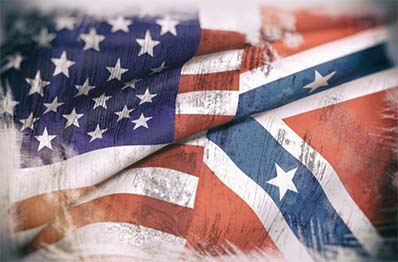
Introduction
Fort Sumter. Antietam. Vicksburg. Gettysburg. Appomattox Courthouse. These 5 places in America are sites of decisive battles of the Civil War. They are places that school children across the country study. There are over 350 more where Americans fought each other over states’ rights, expansion, and, at the core, slavery. These battles, all held on American soil, ended with General Robert E. Lee’s surrender at Appomattox Courthouse, bringing the war to an end. The Civil War can spark deep conversations, and literature can be a wonderful way to start those conversations.
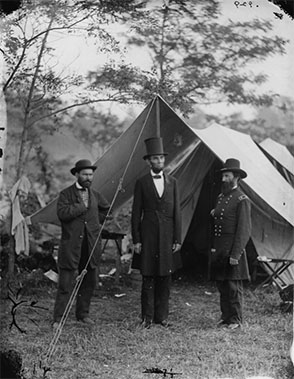
Background Knowledge
In 1776, America proclaimed to the world that “all men are created equal.” But all men were not equal and never had been. By the time settlers arrived at Jamestown in 1607, the enslavement of people of color was widespread. As the young country grew and expanded, slavery became a central debate. Beginning in 1780 with Pennsylvania, Northern States ended slavery while unpaid labor expanded in the Southern States. Legislation sought to keep a balance of free states and slave states until 1850 when four free states joined the United States. Abraham Lincoln won the election of 1860 with a platform to end slavery in US territories. Between the election and the inauguration, seven slave states seceded from the US and formed the Confederate States of America. In his inaugural address in March 1861, Lincoln tried to soothe Southern tempers and attempted reconciliation by insisting that he was not trying to start a civil war. About 5 weeks later, on April 12, 1861, Confederate troops fired on Fort Sumter in South Carolina, starting the Civil War. Almost exactly four years later, on April 9, 1865, Confederate General Robert E. Lee surrendered at Appomattox Court House, ending the war. During those 4 years, over 1 million Americans died because of the war. It is estimated that between 600,000 to 800,000 soldiers from both sides lost their lives. Slavery was abolished with the passing of the 13th Amendment in December of 1865. It would take 12 more years to restore and reintegrate the states who seceded. The Reconstruction Era ended in 1877.
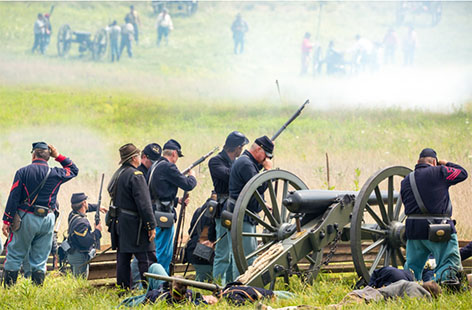
ACTIVITIES
Selective List of Picture Books
- Pink and Say by Patricia Polacco (ISBN 9780399226717)
- Pink and Say are both soldiers fighting for the Northern Army. Say is injured in battle and Pink finds him on the battlefield and nursed him back to health. Pink brings Say home to his mother, who continues to care for him. This is a story of brotherhood and of friendship and loyalty.
- After reading, examine the Liljenquist Collection of Civil War Soldiers’ Portraits from the Library of Congress. Use the Primary Source Analysis Tool or use the following suggestions for the teacher from the LOC:
- Write a caption for a photo. What is happening? What is the subject feeling?
- Select an image. Predict what will happen one minute after the scene shown in the image. One hour after? Explain the reasoning behind your predictions.
- Study and analyze the items by and about Cornelius V. Moore. Consider the tone and content of the two letters. Reflect on what can be learned from the set that cannot be learned from a single item.
- Choose one of the photographs and create a series of correspondence telling the subject’s story. Write one letter from before the photo was taken and one letter from after. Take into consideration the subject’s age, facial expression, uniform, and any objects in the photograph.
- Consider that, in the 21st century, people can take a photograph whenever they want. However, during the Civil War, having one’s photograph taken was rare enough to warrant carefully composing every aspect of the photo. Ask: If you were preparing for the only photo you would ever have taken of yourself, what items—or even animals—would you have with you? How would you pose? What would you stand in front of? Who would you send it to? If time permits, ask students to bring their items to class and take their “only” photograph
- Write a journal entry from each character’s perspective. Write about one day at Moe Moe Bay’s house. Write about the day Pink and Say met on the battlefield. Write about the day that they parted ways.
-
The Last Brother: A Civil War Tale by Trinka Hakes Noble (ISBN 9781585362530)
- Eleven-year-old Gabe joins the Union Army as a bugler. His regiment marches to Gettysburg and Gabe meets a Confederate bugler. After they meet and talk, the purpose of the war is a little less clear. While students will not learn facts about the Battle of Gettysburg, they will get a sense of the war’s toll on humanity.
- Write a letter from Gabe to Orlee after Pickett’s Charge. Exchange letters with a classmate and write back from Orlee’s perspective.
-
Seeing the Elephant by Pat Hughes (ISBN 9780374380243)
- To “see the elephant” is to go into battle for the first time. Izzy wants to see the elephant with his older brothers, who have joined the Union Army. The closest that he gets to battle is the Union hospital in Washington, DC, where he meets a Confederate soldier who is going from the hospital to prison. Izzy realizes that there is more to the war than fighting on the front lines.
-
Before She Was Harriet by
Lesa Cline-Ransome (ISBN 9780823444298)
- This beautiful book shares Harriet Tubman’s life in reverse chronological order. Students learn about her life and deeds in text simple enough to share with young students but helps initiate deep and complex conversations with older students.
- Pair the book with the poem “Harriet Tubman” by Eloise Greenfield.
- Pair the book with Escape to Freedom from Scholastic News.
- Connect to music by exploring songs from the Underground Road. The Harriet Tubman Historical Society provides excellent information about how songs were used to help enslaved people escape.
- Wade in the Water
- Steal Away
- Swing Low, Sweet Chariot
- Follow the Drinking Gourd
-
Unspoken by Henry Cole (ISBN 9780545399975)
- Sometimes the best stories are told without a single word. A young girl finds a runaway slave in her barn. She tries to care for the person in the barn, even as slave hunters come to her farm to look for runaways. The runaway visitor moves on but leaves the girl a gift to thank her for her thoughtfulness.
-
Students can write the story of this wordless book.
- Technology Approach: Use the Google Chrome browser extension Mote (TeachersFirst review) to allow students to tell the story of Unspoken as a voiceover in Google Docs or Google Slides.
- Non-technology Approach: Students can use post-it notes to write the story for each page of the book. When they put their post-it notes in order, they have an entire story.
-
The Eternal Soldier by Allison Crotzer Kimmel (ISBN 9781499808636)
- Sallie was delivered to the 11th Pennsylvania Volunteer Infantry in a basket. The unit kept her as a mascot, and she loyally served with them throughout the war. During the Battle of Gettysburg, Sallie stayed with her wounded regiment until help arrived. She eventually fell in battle. She is remembered on a monument at Gettysburg.
-
Connect to writing by having students write about what mascot they would like if they were in the Army.
- Technology Approach: Use Adobe Spark Video Creator (TeachersFirst review) to create a video about the mascot they chose. Students can include pictures, slides, texts, music, or videos and can narrate their videos to make this a cross-curricular activity.
- Non-technology Approach: Students can draw a picture, find a picture in a magazine or online, or use arts and crafts materials to make a picture of their mascot and then write about it.
Selective List of Chapter Books
-
Civil War on Sunday by Mary Pope Osborne (ISBN 9780679890676)
- Jack and Annie find themselves surrounded by cannon fire as they land on a Civil War battlefield. Their adventures take them to meet Clara Barton, and they help wounded soldiers.
- Bring history to life with a hands-on activity curated at Tina’s Dynamic Homeschool Plus. Make a handkerchief doll or try to make hardtack for students to taste. There are also coloring pages and links to many other activities.
- Focus on the historical fiction genre by identifying the facts in the book and the fictional elements in the book. Create a t-chart to organize the elements.
- Jack and Annie meet Clara Barton during their travels. Students can explore medicine in the Civil War. Explore the online resources at the National Museum of Civil War Medicine to take a virtual field trip to the museum or use the museum’s lesson plans to learn more about Civil War hospitals, among other topics.
- Compare and contrast the contributions and experiences of African American soldiers in the Civil War and Revolutionary War. The official Magic Tree House website suggests dividing the students into two teams and having each research to find more information. Use this information in a Jigsaw activity to share what they have learned.
- Connect to poetry by analyzing “When Lilacs Last in the Dooryard Bloom” by Walt Whitman.
-
Nathan Hale’s Hazardous Tales by Nathan Hale
-
Big Bad Ironclad! (Hazardous Tales #2) (ISBN 9781419703959)
- Graphic novels are an exciting way to present information. This title is available on Epic! (TeachersFirst review) so students can see the illustrations in any instructional format. There are discussion guides for all of Nathan Hale’s Hazardous Tales here.
- Learn more about the Battle of Hampton Roads and the discovery of the USS Monitor shipwreck in this video from NOAA.
- The Monitor National Marine Sanctuary has created an extensive curriculum that centers around the USS Monitor. It includes cross-curricular activities about the Civil War, activities about the Battle of Hampton Roads, and activities about the Discovery, Recovery, and Restoration of the USS Monitor.
-
The Underground Abductor (Hazardous Tales #5) (ISBN 9781419715365)
- Graphic novels are a compelling way to present information, enhancing student understanding. This title is available on Epic! (TeachersFirst review) so students can see the illustrations in any instructional format. There are discussion guides for all of Nathan Hale’s Hazardous Tales here and here.
- There are over 680 sites verified as connected to the Underground Railroad. The National Parks Service maintains a list of these sites. (36 states have verified Network to Freedom sites, with only AK, HI, ID, MN, MS, MT, NV, NH, NM, ND, OR, UT, WA, and WY without.) Websites are listed for many of the sites. and there is a list of sites that offer virtual experiences.
- The National Park Service offers a Junior Ranger Activity Booklet and a virtual Lost in Disguise Junior Ranger activity.
- The National Endowment for the Humanities has created a lesson plan and curated a list of resources and activities to support teachers.
- Dickinson College created a Digital Classroom through the House Divided Project. It focuses on the Underground Railroad in Pennsylvania but has great information.
-
Dear America Series
-
These books, written in diary form, help students learn what life was like during the Civil War.
- When Will This Cruel War Be Over?: The Civil War Diary of Emma Simpson, Gordonsville, Virginia 1864 (ISBN 9780590228626) I Thought My Soul Would Rise and Fly: The Diary of Patsy, a Freed Girl, Mars Bluff, South Carolina, 1865 (ISBN 9780590849135)
- A Picture of Freedom: The Diary of Clotee, a Slave Girl, Belmont Plantation, Virginia, 1859 (ISBN 9780545242530)
- A Light in the Storm: The Civil War Diary of Amelia Martin, Fenwick Island, Delaware, 1861 (ISBN 9780590567336)
- Scholastic has a great website to support the Dear America Series. My America is part of that series. Organized by period, this site has information about the era, downloadable materials curated in partnership with the Library of Congress, and whiteboard-ready slides. There are also recipes and information about the activities of the period.
-
These books, written in diary form, help students learn what life was like during the Civil War.
-
Big Bad Ironclad! (Hazardous Tales #2) (ISBN 9781419703959)
Selective List of Nonfiction Books
-
Nurse, Soldier, Spy: The Story of Sarah Edmonds, A Civil War Hero by Marissa Moss (ISBN 9781419720659)
- This picture book shares the story of Sarah Edmonds, a woman who disguises herself as a man to join the Union Army and becomes a Union spy.
- Have students research more roles that women played in the Civil War. Ducksters is a great place to start finding more information.
-
B is for Battle Cry: A Civil War Alphabet Book by Patricia Bauer (ISBN 9781585363568)
- Students can create their own alphabet book to synthesize their knowledge about the Civil War.
- Technology Approach: Use Book Creator (TeachersFirst review) to allow students to create a digital storybook about the alphabet.
- Non-technology Approach: Use paper, pencils, markers and more to allow students to personalize their own alphabet book.
- Students can create their own alphabet book to synthesize their knowledge about the Civil War.
-
Two Miserable Presidents: Everything Your Schoolbooks Didn’t Tell You About the Civil War by Steve Sheinkin (ISBN 9781250075789)
- Sheinkin writes about the Civil War in the same way that he would talk to his friends. The big picture is broken down so it is accessible to readers, and it is a lively read.
-
Civil War Through the Eyes of Abraham Lincoln by Martha Kneib (ISBN 9781680780307)
- Explore the Civil War from President Abraham Lincoln’s perspective. The book includes a look at losses in Lincoln’s life, adapting to Presidential life, navigation of the war, and the short time after the war.
-
Students can write a journal from President Lincoln’s perspective.
- Technology Approach: Use Flip (TeachersFirst review) to allow students to record their thoughts instead of writing them.
- Non-technology Approach: Use paper and pencil. Make the paper look “old” by spritzing the page with coffee or tea.
-
Bull Run by Paul Fleischman (ISBN 970060214463)
- The first major battle of the Civil War was a Bull Run in Virginia. Paul Fleischman shares the battle from 16 different viewpoints.
- Choose one of the 16 viewpoints and explore it a little more. Use research to find a real-life person who could have been that viewpoint.
- Consider a simulation. Recreate a single battle, like Bull Run, or look at the war from a larger perspective.
Virtual Field Trips
-
Civil War Battlefield Tours
- The site above includes the most famous battlefields like Antietam and Gettysburg and has less well-known battlefields such as Totopotomoy Creek.
-
Anderson Slave Pen
- Pair the photographs from above with an article from Encyclopedia Virginia with information about another slave trading country.
-
National Parks Service
- Most Civil War sites are National Parks. Search by park name or simply type in “Civil War” to get a listing of resources. Many have 360 views that can be used as field trips.
- Many of the National Parks have a Junior Ranger Badge that can be earned online.
- Vicksburg Virtual Museum
- Andersonville Prison Virtual Field Trip
Videos to Watch
- Crash Course Videos (Part 1 and Part 2)
- Artifact Investigation from the American Civil War Museum
- Historical Underground Railroad House
- The Underground Railroad Explained
- Fort Sumter and the Civil War
- The Emancipation Proclamation from Khan Academy
- The Battle of Perryville
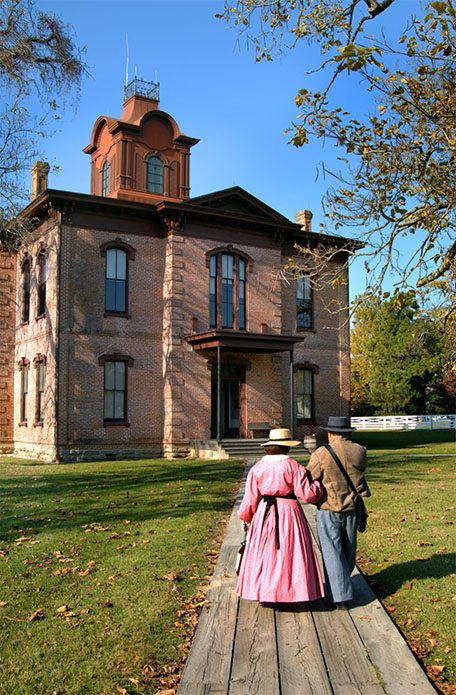
EXTENSIONS
-
Explore the Life of a Civil War Soldier
- It’s easy to get caught up in dates and battles and generals but look deeper into the life of a Civil War Soldier. What did they eat? How did they live?
- Start with “I’ll Be a Soldier”. What was mentioned? Using the song, what do you know about the life of a soldier?
- Compare the song to the diaries and journals of the soldiers.
- Check out more information about the life of a Civil War soldier on Ducksters.
- It’s easy to get caught up in dates and battles and generals but look deeper into the life of a Civil War Soldier. What did they eat? How did they live?
-
The Civil War Changed Our Lives
- How are the impacts of the Civil War still felt today? The AARP explored this idea and the article can be used to spark further investigation and discussion.
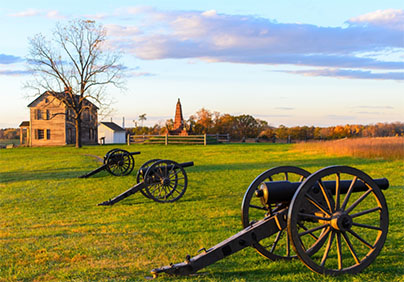
CORRELATION TO STANDARDS
-
AASL National School Library Standards
- Inquire Shared Foundation, Think Domain - Learners display curiosity and initiative by: 1. Formulating questions about a personal interest or a curricular topic. 2. Recalling prior and background knowledge as context for new meaning
- Inquire Shared Foundation, Grow Domain - Learners participate in an ongoing inquiry-based process by: 1. Continually seeking knowledge
- Include Shared Foundation, Create Domain - Learners adjust their awareness of the global learning community by:. 2. Evaluating a variety of perspectives during learning activities
- Include Shared Foundation, Grow Domain - Learners demonstrate empathy and equity in knowledge building within the global learning community by: 2. Demonstrating interest in other perspectives during learning activities
- Curate Shared Foundation, Create Domain - Learners gather information appropriate to the task by: 2. Collecting information representing diverse perspectives
- Explore Shared Foundation, Think Domain - Learners develop and satisfy personal curiosity by: 1. Reading widely and deeply in multiple formats and write and create for a variety of purposes. 2. Reflecting and questioning assumptions and possible misconceptions.
- Explore Shared Foundation, Share Domain - Learners engage with the learning community by: 1. Expressing curiosity about a topic of personal interest or curricular relevance
-
ISTE Standards for Students
- Knowledge Constructor - 3d. Students build knowledge by actively exploring real-world issues and problems, developing ideas and theories and pursuing answers and solutions.
